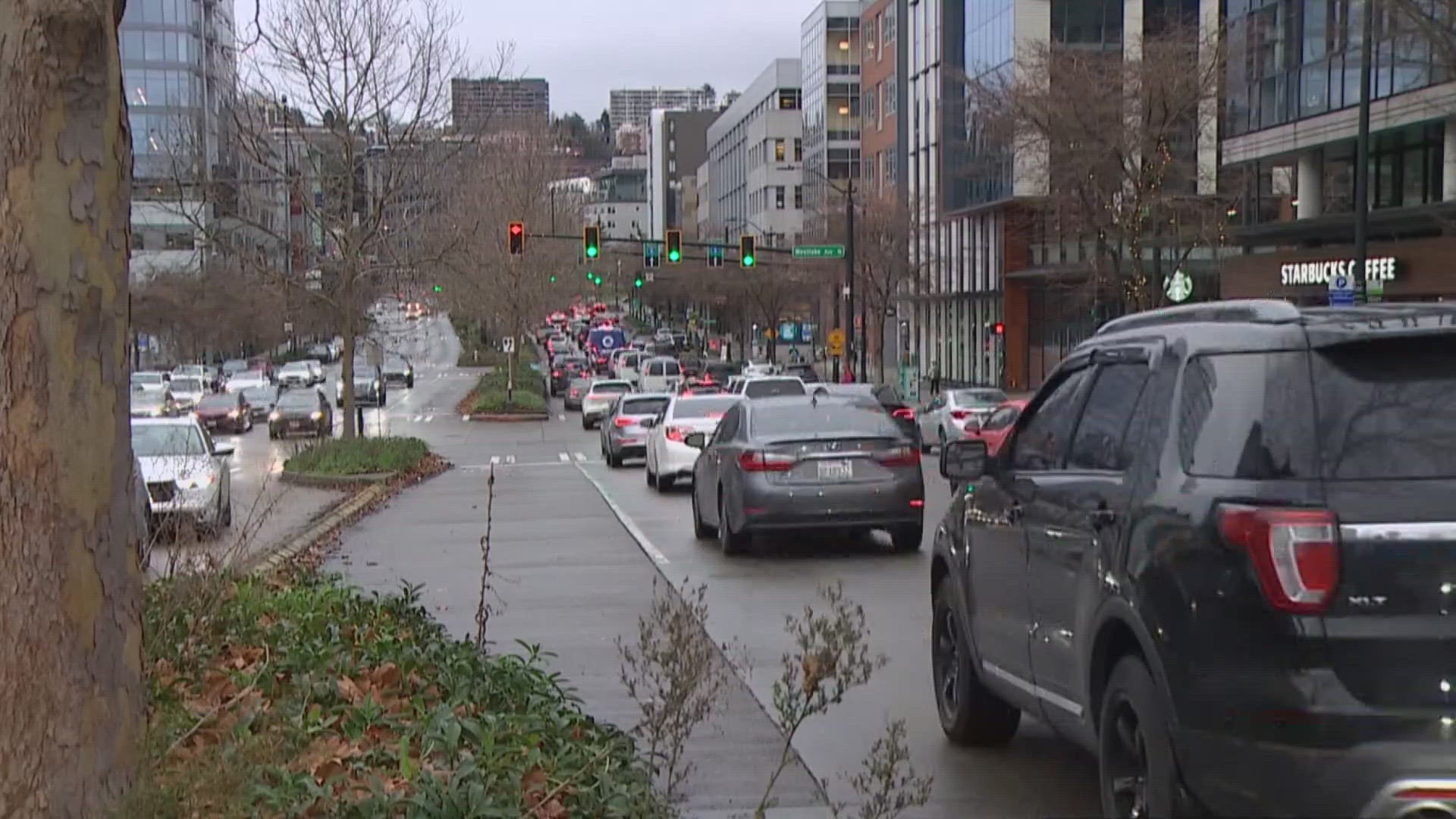SEATTLE — Drivers in Seattle may soon get some relief from long waits at stop lights, thanks to new AI technology.
Seattle is the first city in North America to use new AI technology from Google aimed to improve traffic flow. The Seattle Department of Transportation said they began working with Google in late 2022 on this partnership.
Google said this technology should reduce the time you spend at red lights in Seattle and reduce carbon emissions as well. These improvements at intersections is something people in South Lake Union said is needed.
“It’s very bad,” said Nayana Sharma, who works in South Lake Union and sees traffic on Mercer Street. “Even the lights, they take a lot of time and these are not even synced.”
The patterns of traffic lights could soon be improved in parts of Seattle, as it is now the first city in North America to use new Google technology called Project Green Light. Project Green Light uses Google maps and AI to figure out how the city can improve flow at intersections.
The city has around 1,200 intersections with signals and the intersections where recommendations from Project Green Light were implemented are:
- 15th Ave NW at NW Market St in Ballard
- 15th Ave NW and NW 53rd St in Ballard
- Greenwood Ave N and N 80th St in Greenwood
A statement sent to KING 5 from Juliet Rothenberg, the Climate AI product lead at Google, said Green Light is a Google Research initiative using AI and Google Maps driving trends to model traffic patterns and make recommendations for optimizing the existing traffic light plans.
"Our AI-based recommendations work with existing infrastructure and traffic systems, and city engineers are able to implement recommendations within minutes, monitor the impact, and see results within weeks," Rothenberg said. "These optimizations can create waves of green lights, allowing cities to improve traffic flow and further reduce stop-and-go emissions so that in places like Seattle, people can experience cleaner, greener cities.”
Google said 50% of emissions at intersections are from accelerating after stopping and that pollution can be 29 times higher at intersections than on open roads.
“Vehicles get better mileage when they are idle or maintain a rate of speed, so if you could keep the flow of traffic at an even rate you would definitely reduce emissions,” said Joshua Doty, who works in South Lake Union and frequently sees traffic backups.
Since this is a new research initiative, it is offered for free to the city.

